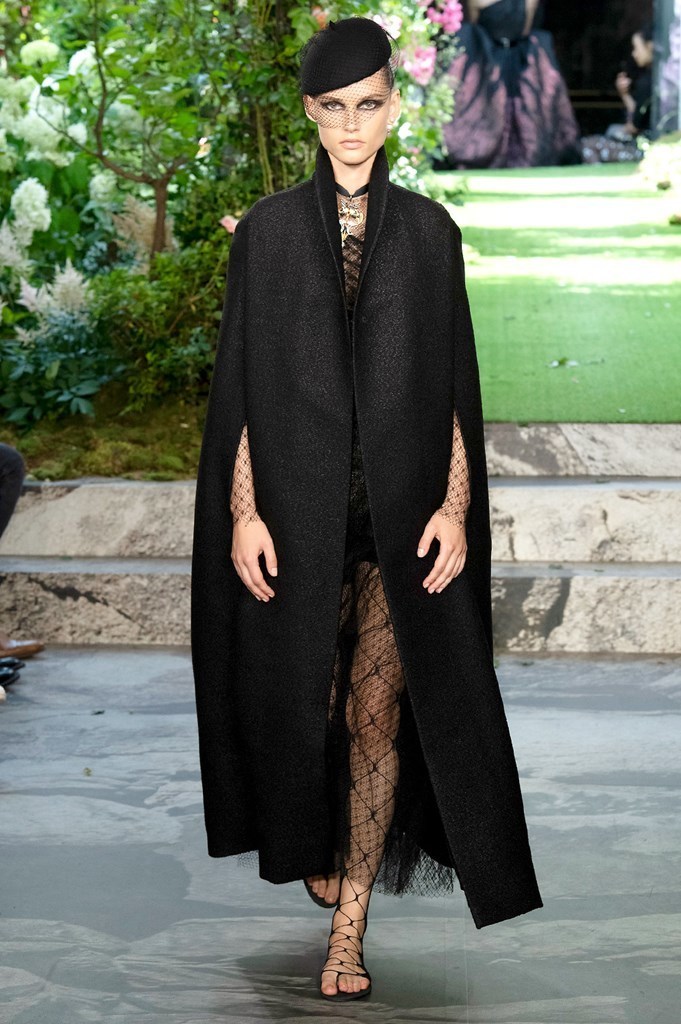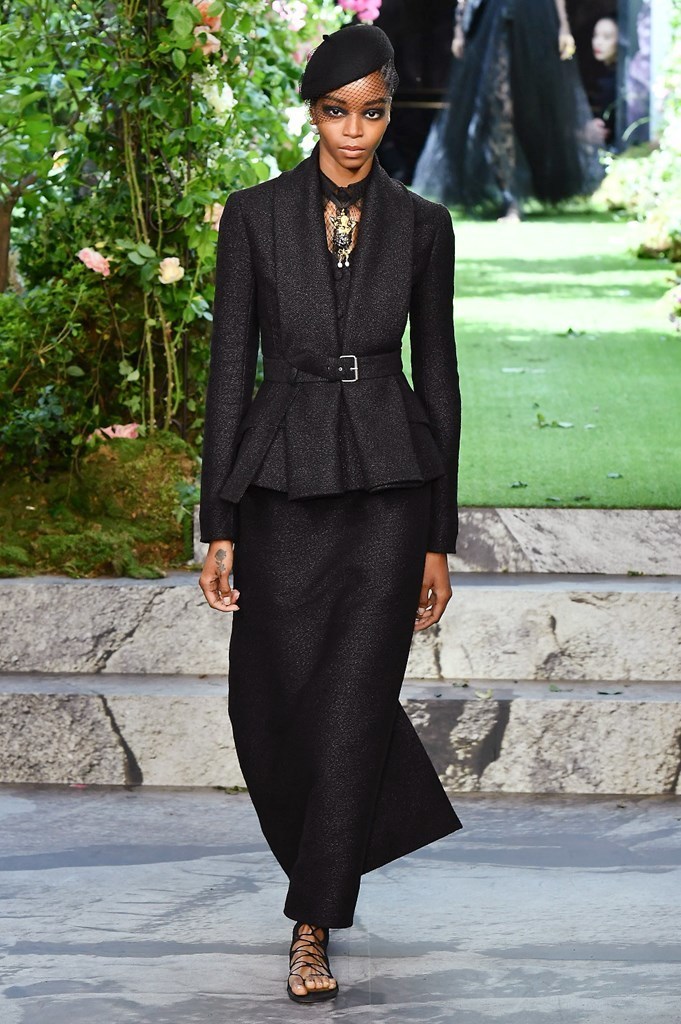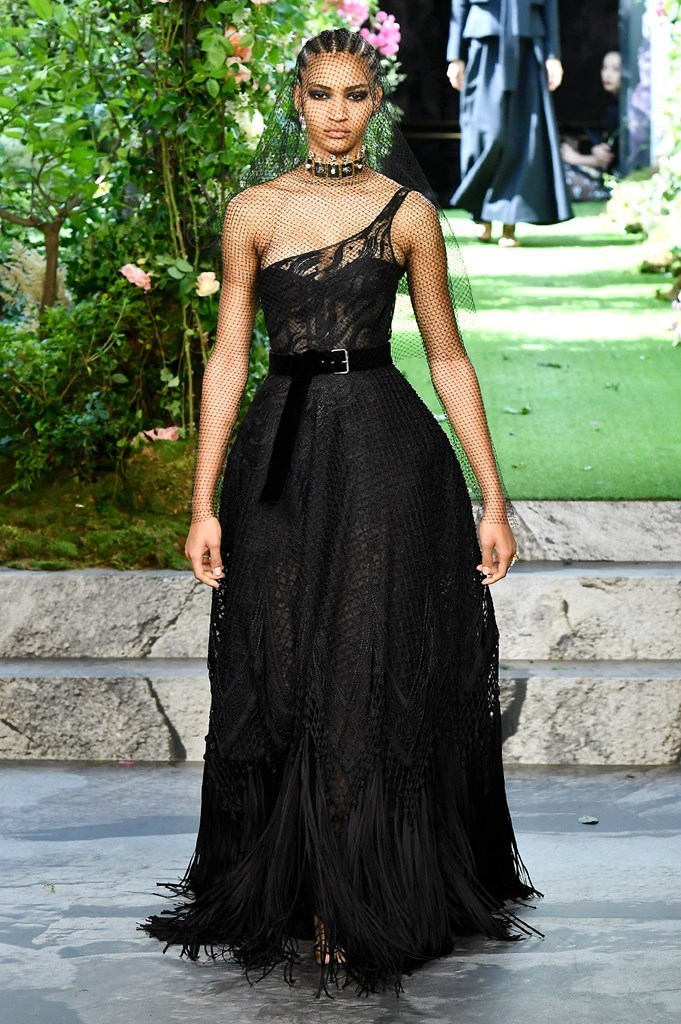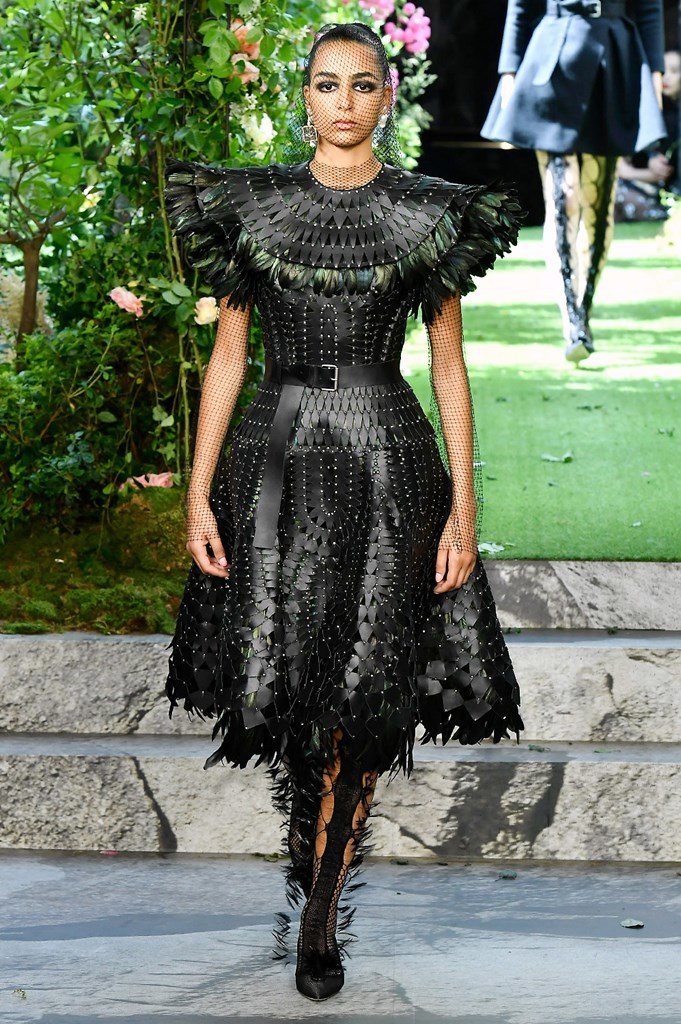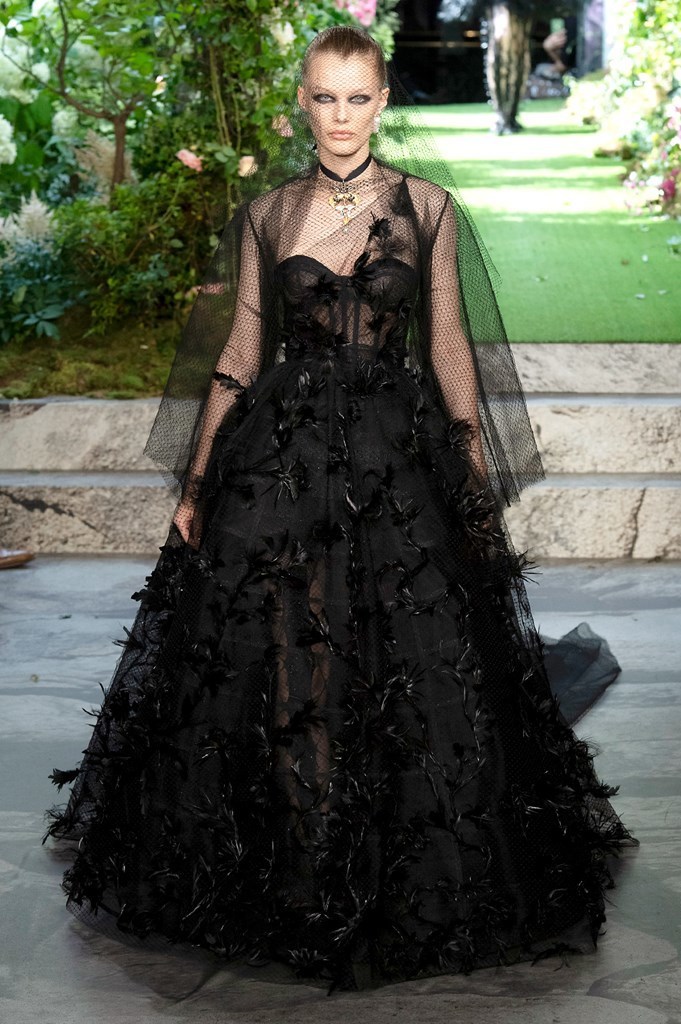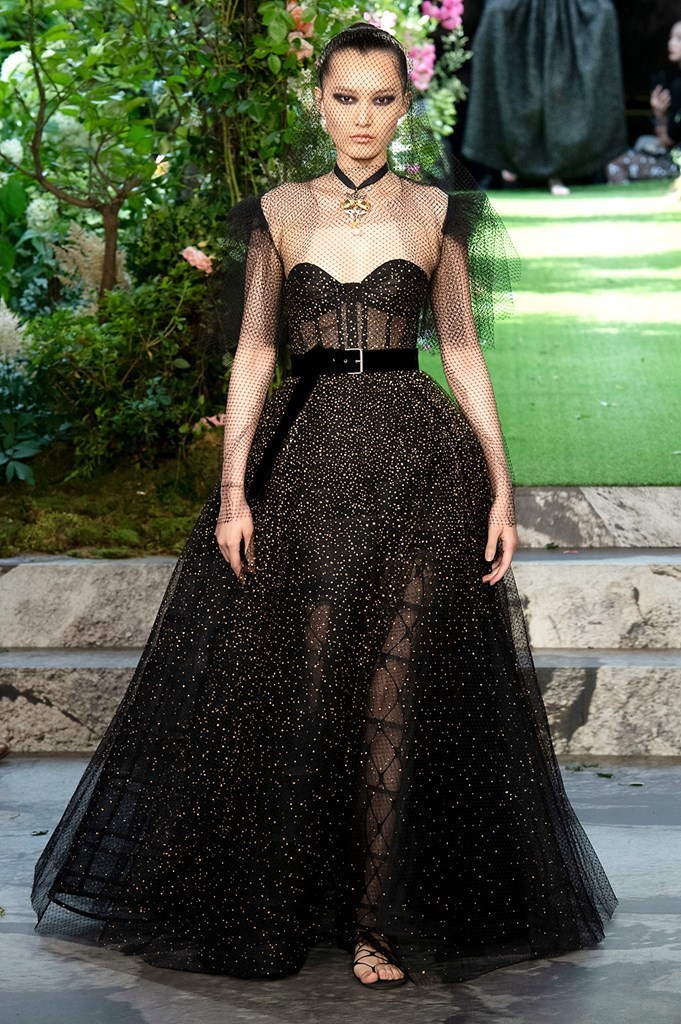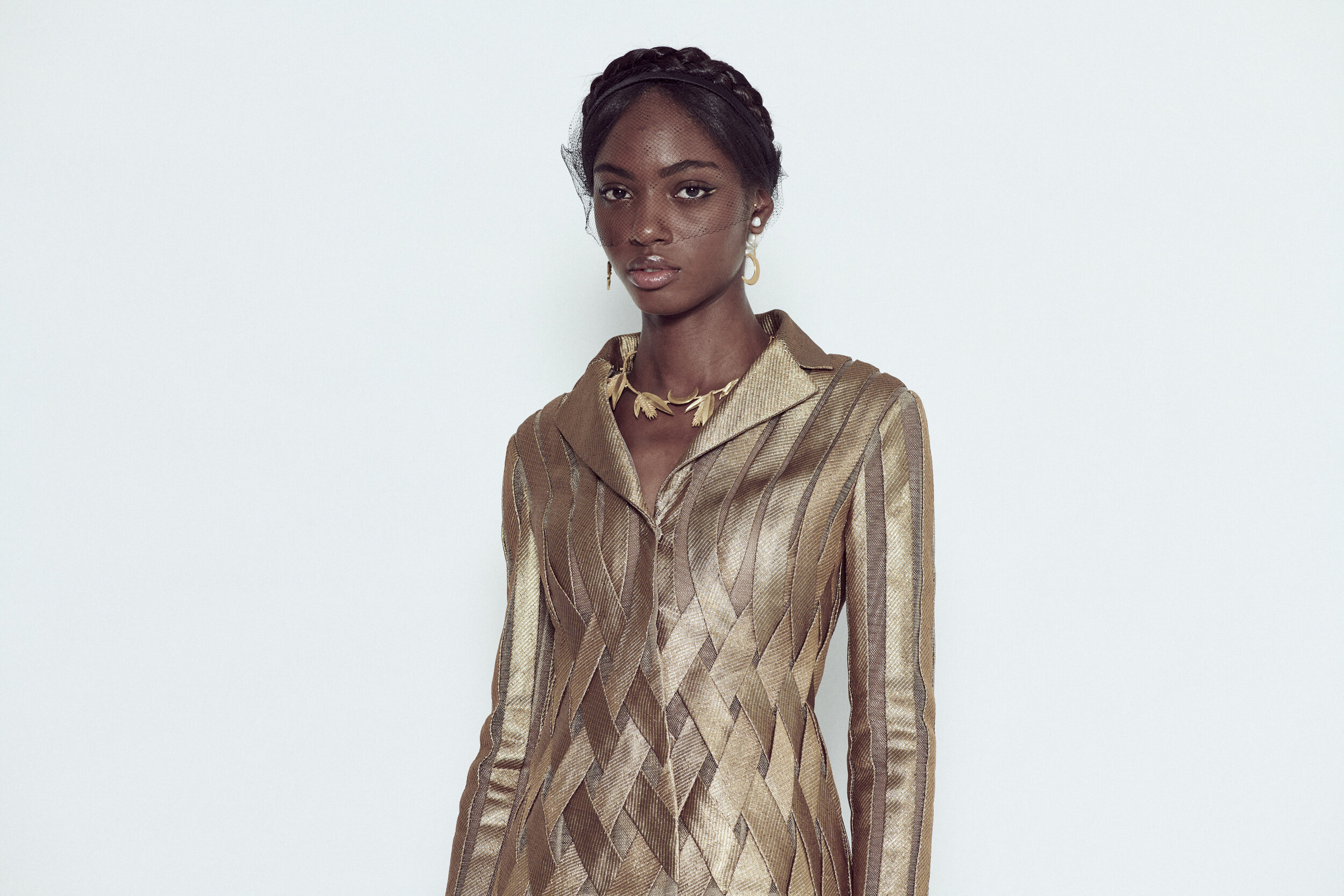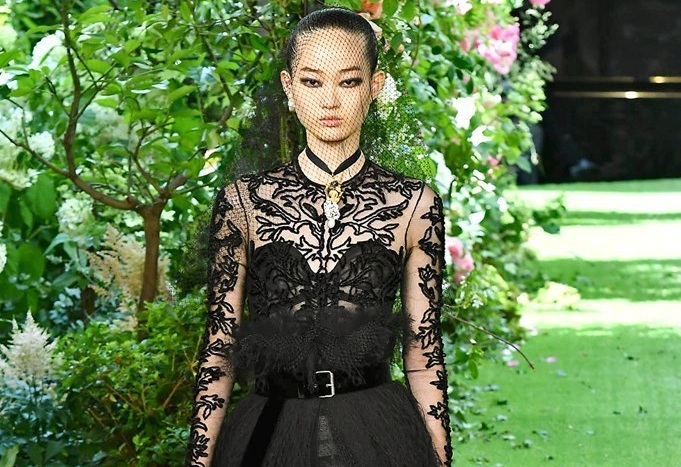Fall 2019 Haute Couture: Dior and the Power of Black
(Press Release) Questioning the form and function of clothing, the architect Bernard Rudofsky’s refections inspired Maria Grazia Chiuri’s new conceptual vision of haute couture as an art destined to dress bodies that are always unique and invested with a singular identity.
Following on from this modern thinker, who grants a central place to the relationship between couture and architecture– two disciplines having to do with the human body and its proportions – Maria Grazia Chiuri presents her autumn-winter2019-2020 haute couture collection in Dior’s hôtel particulier.
The House’s birthplace – 30, Avenue Montaigne – is where every Dior Artistic Director has worked in close collaboration with the Ateliers. Among the inspirations for this collection are the powerful black-and-white works of Penny Slinger – the feminist artist who created the show’s scenography that recounts the potent alchemy of fresh air and water, in the heart of a hostile and mysterious nature populated by feminine creatures. T
hey have always shouldered the weight of the world, like a contemporary iteration of caryatids, the sculptures embodying female forms that support the architecture of ancient temples and decorate certain Parisian edifices, draped in tunics with pure lines.
Much like the one white dress Maria Grazia Chiuri designed for a collection that explores the pluralistic power of black. “I could write a book about black,” Christian Dior declared in his Little Dictionaryof Fashion.
The peplos – the tunic women wore in Ancient Greece – has no defined, constructed cut: it’s the body that gives it its form. In his final collection, Christian Dior returned to this elemental form of draping, dialoguing between notions of couture and of architecture, from flou to tailoring. In echo, an interrogation still resonates today: “Are Clothes Modern?” underscoring haute couture’s capacity to question modernity. Designing a collection almost entirely in black, punctuated by rare colours that reveal its power, implies a return to fundamentals, to the foundations of haute couture, and confronting it against contemporary lifestyles. Black demands perfection, and here it gives life to transformable capes. Each dress is an edifice that reveals its construction, the bone structure that supports and defines it.
“We don’t need a new way of building; we need a new way of life,” Bernard Rudofsky argued. By the same token, this collection etches out an unprecedented landscape, making it possible to question notions about the body, clothing and habitats: haute couture becomes a creative laboratory for thinking differently about clothing and its relationship to time and space.
DISCOVER MORE ABOUT CHRISTIAN DIOR


